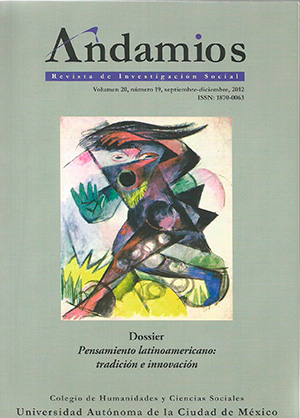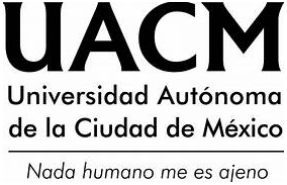The communication of the tourist destinations: conceptual and theoretical approaches to the definition of a state of the art
DOI:
https://doi.org/10.29092/uacm.v9i20.378Keywords:
Communication, tourism, tourist destination, branding, emotionAbstract
This paper aims to highlight the changes experienced by the communication register of tourist destinations in the last ten years. The possibilities offered by Information Technology and Communication (CIT), in line with a renewed use of the communication strategy, notes the need to define a new state of the art for the binomial ‘communication and tourism’. Indeed, the use of merely informative and/or promotional supports has evolved into a new logic of production, own the corporate level, putting the tourists in the core of the communication strategy. In this respect, the terms ‘persuasion’ and ‘emotion’ define the new coordinates of work for the communication of the tourist destinations.
Downloads
References
Aaker, D. A. (1996), Construir marcas poderosas, Barcelona: Gestión 2000.
Alonso, C. M. (2007), “La construcción de la imagen turística de un territorio a través de la publicidad”, en Questiones publicitarias. Revista Internacional de Comunicación y Publicidad, 12, pp. 91-104.
Anderson, K., y Smith, S. J. (2001), “Editorial: Emotional geographies”, en Transactions of the Institute of British Geographers, 26(1), pp. 7-10.
Anholt, S. (2009), “Introductory Essay: Why Nacional Image Matters”, en World Tourism Organization y European Travel Comission (ed.), Handbook on tourism destination branding, Madrid: World Tourism Organization, pp. 9-16.
Anholt, S. (2010), Places: identity, image and reputation, Reino Unido: Palgrave Macmillan.
Anton Clavé, S. (1998), “La urbanización turística: de la conquista del viaje a la reestructuración de la ciudad turística”, en Documents d’Anàlisi Geogràfica, núm. 32, Bellaterra: Servei de Publicacions de la UAB, pp. 17-43.
_____ (2004), “La presencia en Internet de los principales destinos turísticos del litoral mediterráneo español”, en Actas del III Congreso Turismo y Tecnologías de la Información y las Comunicaciones, Turitec, Málaga: Universidad de Málaga, pp. 1-19.
_____ (2009), “El consum d’experiències i emocions. Perspectives per a la innovació en turisme i oci a Catalunya”, en Paradigmes: economia productiva i coneixement, núm. 3, Barcelona: Generalitat de Catalunya, pp. 93-100.
Baudrillard, J. (1985), “El éxtasis de la comunicación”, en Jean Baudrillard et al., La posmodernidad, Barcelona: Kairós, pp. 187-198.
Bauman, Z. (2003), Modernidad líquida, México: Fondo de Cultura Económica.
_____ (2007a), Miedo líquido: La sociedad contemporánea y sus temores, Barcelona: Paidós.
_____ (2007b), Tiempos líquidos. Vivir en una época de incertidumbre, Barcelona: Tusquets.
Bigné Alcañiz, J. E., Font Aulet, X., y Andreu Simó, L. (2000), Marketing de destinos turísticos: Análisis y estrategias de desarrollo, Madrid: ESIC.
Blain, C., Levy, S. E. y Ritchie, J. R. B. (2005), “Destination branding: Insights and practices from destination management organizations”, en Journal of Travel Research, 43(4), pp. 328-338.
Buhalis, D. (2003), eTourism: Information technologies for strategic tourism management, Nueva York: Financial Times Prentice Hall.
Cai, L. A. (2002), “Cooperative branding for rural destinations”, en Annals of Tourism Research, 29(3), pp. 720-742.
Camprubí, R. (2009), “El rol del turista en la formació de la imatge turística emesa”, en Jordi de San Eugenio Vela (coord.), Manual de comunicació turística: de la informació a la persuasió, de la promoció a l’emoció, Girona: Documenta Universitaria, pp. 103-112.
Davidson, J., Bondi, L. y Smith, M. (2005), Emotional geographies, Aldershot: Ashgate.
San Eugenio Vela, J. (2009), Manual de comunicació turística: de la informació a la persuasió, de la promoció a l’emoció, Girona: Documenta Universitaria.
Donaire, J. A. (2009), “Tematización”, Artículo en línea disponible en http://clan-destinos.com/2009/03/20/tematizacion, consultado el 22 de febrero de 2010.
Fernández Cavia, J. y Huertas, A. (2008), “Comunicar las ciudades: los sitios web como herramientas de comunicación de las marcas ciudad”, en Actas del III Congreso de Marketing de Ciudades, Elche: Ciudad de Congresos, pp. 1-23.
Fernández Cavia, J. (2009), “Llums i ombres del place branding”, en Jordi de San Eugenio Vela (coord.), Manual de comunicació turística: de la informació a la persuasió, de la promoció a l’emoció, Girona: Documenta Universitaria, pp. 91-102.
Friedman, T. L. (2006), La tierra es plana. Breve historia del mundo globalizado del siglo XXI, Madrid: Martínez Roca.
Gergen, K. J. (1992), El yo saturado: dilemas de identidad en el mundo contemporáneo, Barcelona: Paidós.
Gomis, J. M. (2009), “La informació turística: del paper a la xarxa”, en Jordi de San Eugenio Vela (coord.), Manual de comunicació turística: de la informació a la persuasió, de la promoció a l’emoció, Girona: Documenta Universitaria, pp. 19-28.
Govers, R. y Go, F. M. (2009), Place branding. Glocal, virtual and physical identities, constructed, imagined and experienced, Hampshire: Palgrave Macmillan.
Gunn, C. (1972), Vacationscape: Designing Tourist Regions, Washington DC: Taylor and Francis / University of Texas.
Harvey, D. (1989), The condition of postmodernity: An enquiry into the origins of cultural change, Oxford: Basil Blackwell.
Huertas, A. y Fernández Cavia, J. (2006), “Ciudades en la web: usabilidad e interactividad de las páginas oficiales de los destinos turísticos”, en Actas del VI Congreso Turismo y Tecnologías de la Información y las Comunicaciones, Turitec, Málaga: Universidad de Málaga, pp. 1-19.
Huertas, A. (2008a), “Aplicación de la Web 2.0 a los destinos turísticos. Implantación y diferencias”, en Actas del VII Congreso Turismo y Tecnologías de la Información y las Comunicaciones, Turitec, Málaga: Universidad de Málaga, pp. 1-16.
_____ (2008b), “Public relations and tourism: Fighting for the role of public relations in tourism”, en Public Relations Review, 34(4), pp. 406-408.
Jameson, F. (1996), Teoría de la postmodernidad, Madrid: Trotta.
Kotler, P. (2000), Introducción al marketing, Madrid: Prentice Hall.
Lanquar, R. (2001), Marketing turístico. De lo global a lo local, Barcelona: Ariel.
Lash, S. y Urry, J. (1998), Economías de signos y espacio. Sobre el capitalismo de la posorganización, Buenos Aires: Amorrortu.
MacCannell, D. (1973), “Staged authenticity: Arrangements of social space in tourist settings”, en The American Journal of Sociology, 79(3), pp. 589-603.
_____ (2003), El turista. Una nueva teoría de la clase ociosa, Barcelona: Melusina.
Marca, G. (2008), “Marcas y patrimonio cultural: tangibilización de la comunicación”, en Santos M. Mateos Rusillo (coord.), La comunicación global del patrimonio cultural, Gijón: Trea, pp. 155-174.
Marzano, G. y Scott, N. (2009), “Power in destination branding”, en Annals of Tourism Research, 36(2), pp. 247-267.
Muñoz, F. (2008), Urbanalización. Paisajes comunes, lugares globales, Barcelona: Gustavo Gili.
Murphy, P., Pritchard, M. P. y Smith, B. (2000), “The destination product and its impact on traveller perceptions”, en Tourism Management, 21(1), pp. 43-52.
Nogué i Font, J. y Vicente Rufí, J. (2001), Geopolítica, identidad y globalización, Barcelona: Ariel.
Nye, J. (2004), “Soft power and american foreign policy”, en Political Science Quarterly, 119(2), pp. 255-270.
Olins, W. (2004), Brand: Las marcas según Wally Olins, Madrid: Turner.
Park, S. Y. y Petrick, J. F. (2006), “Destinations’ perspectives of branding”, en Annals of Tourism Research, 33(1), pp. 262-265.
Pike, S. (2009), “Destination brand positions of a competitive set of near-home destinations”, en Tourism Management, 30(6), pp. 857-866.
Pride, R., Morgan, N. y Pritchard, A. (2002), Destination branding. Creating the unique destination proposition, Oxford: Elsevier Butterworth-Heinemann.
Quivy, R. y Van Campenhpoudt, L. (1992), Manual de investigación en ciencias sociales, México: Limusa.
Robertson, R. (1992), Globalization: Social theory and global culture, Londres: Sage.
San Martín, H (2005), Estudio de la imagen de destino turístico y el proceso global de satisfacción: adopción de un enfoque integrador, Tesis Doctoral no publicada, Santander: Universidad de Cantabria.
Thien, D. (2005), “After or beyond feeling? A consideration of affect and emotion in geography”, en Area, 37(4), pp. 450-454.
Tomlinson, J. (1999), Globalization and culture, Cambridge: Polity Press.
Torres Bernier, E. (2008), El sistema d’activitats turístiques, Barcelona: Fundació per a la Universitat Oberta de Catalunya.
Urry, J. (2004), La mirada del turista, Lima: Universidad de San Martín de Porres.
_____ (2008), “La globalización de la mirada del turista”, Artículo en línea disponible en http://www.barcelonametropolis.cat/es/page.asp?id=23&ui=12, consultado el 26 de abril de 2010.
Valls J. F. (2004), Gestión de destinos turísticos sostenibles, Barcelona: Gestión 2000.
Van Ham, P. (2008), “Place branding: The state of the art”, en The Annals of the American Academy of Political and Social Science, 616(1), pp. 126-149.
Published
Issue
Section
License
This Journal is licensed under Creative Commons Mexico 2.5. It is allowed to reproduce and disseminate the contents of the Journal for educational or research purposes, not for profit, as long as they are not mutilated and cite the source (Andamios, Revista de Investigación Social) and the author.
The copyright of the articles published in Andamios, Revista de Investigación Social are transferred by the author(s) to Universidad Autónoma de la Ciudad de México when the originals have been accepted, so that they are published and distributed both in the printed and electronic versions of the Journal. However, as established by law, the author(s) retains their moral rights. The author(s) will receive a form of assignment of copyright that they must to sign when their original has been accepted. In the case of collective articles, the signature of one of the authors will suffice, provided that the latter has obtained the consent of the others.
Authors may use the material of their article in other works or books published by themselves, with the condition of quoting Andamios as the original source of the texts.
The articles contained in this publication are the responsibility of their authors and do not compromise the official position of Andamios, Revista de Investigación Social of the Universidad Autónoma de la Ciudad de México.


